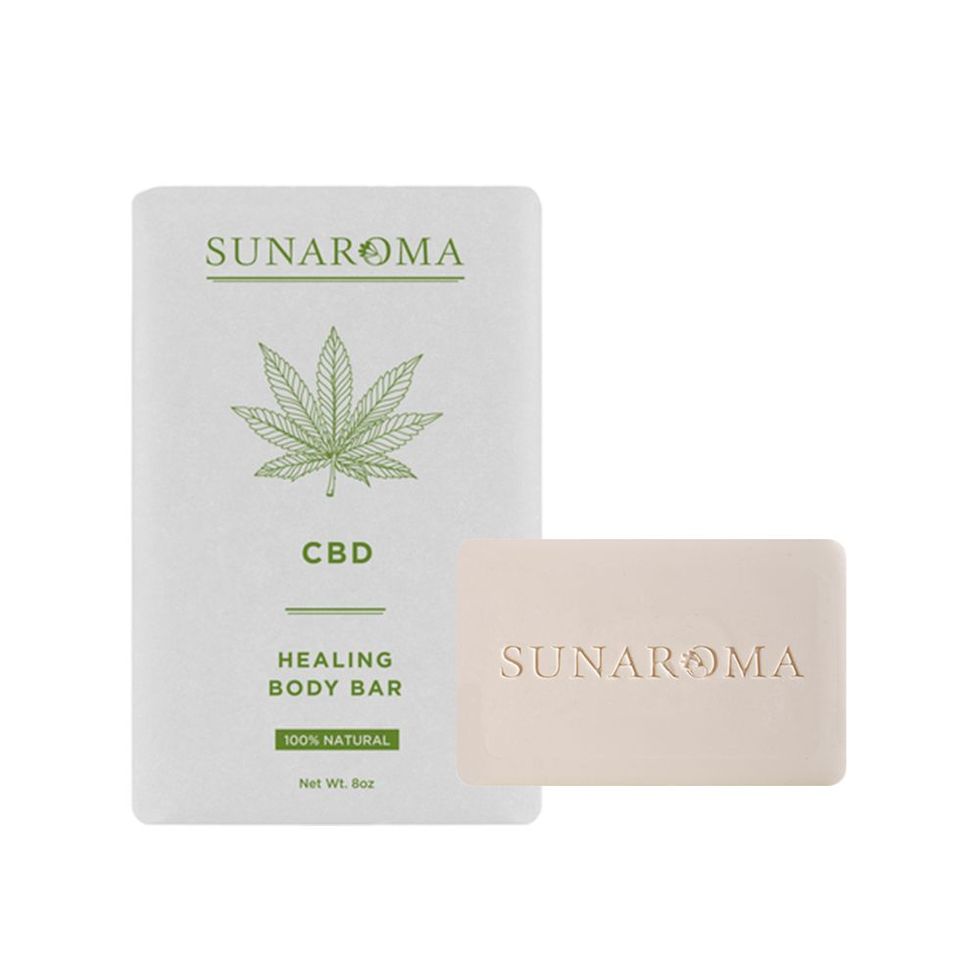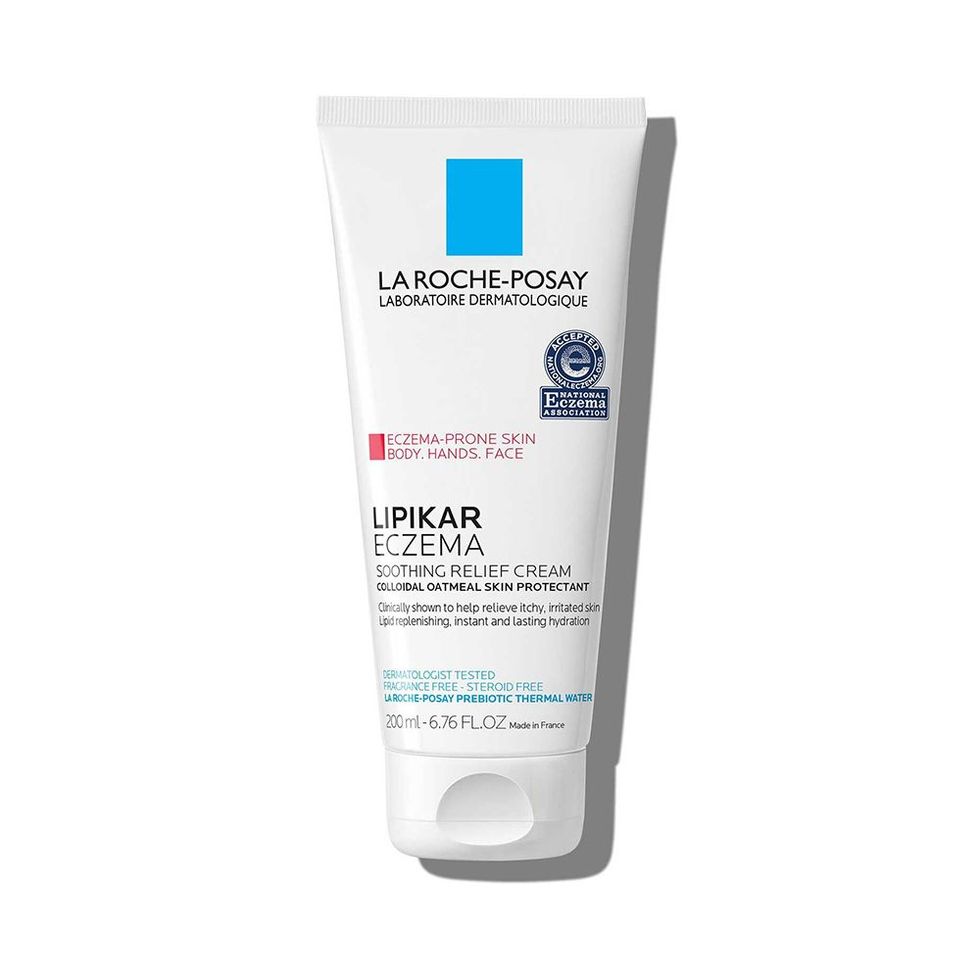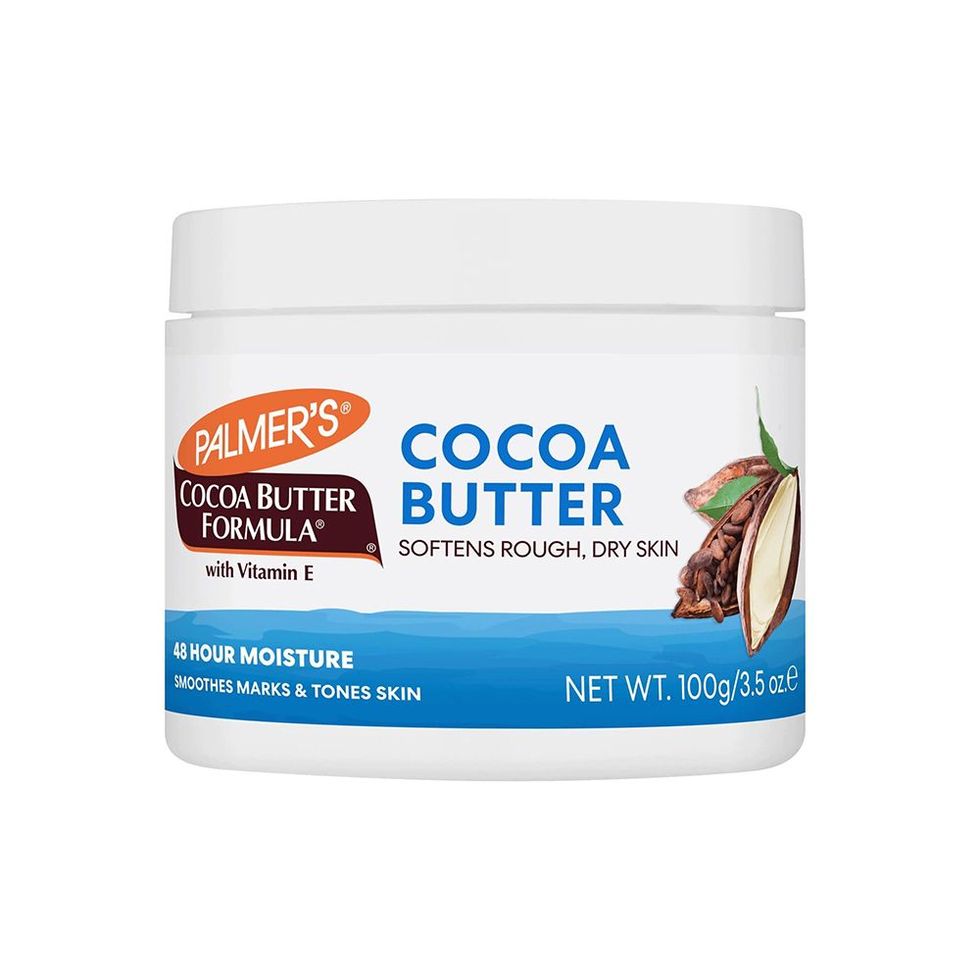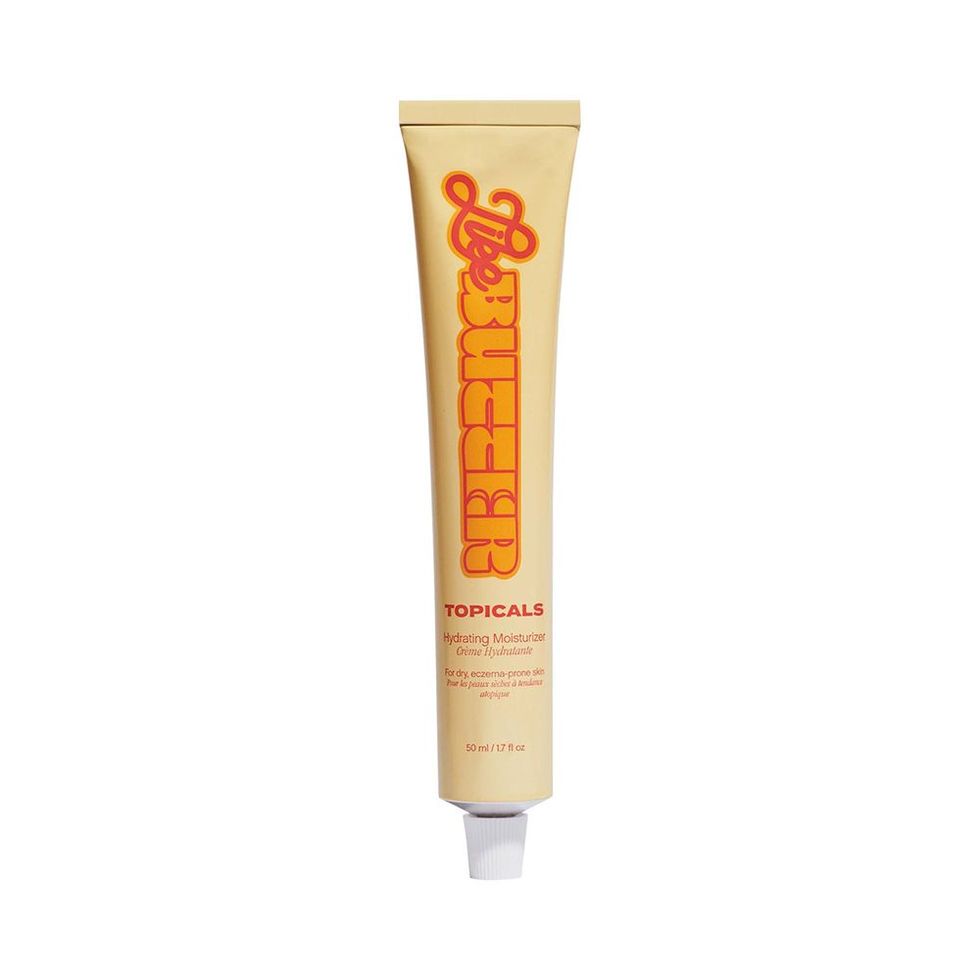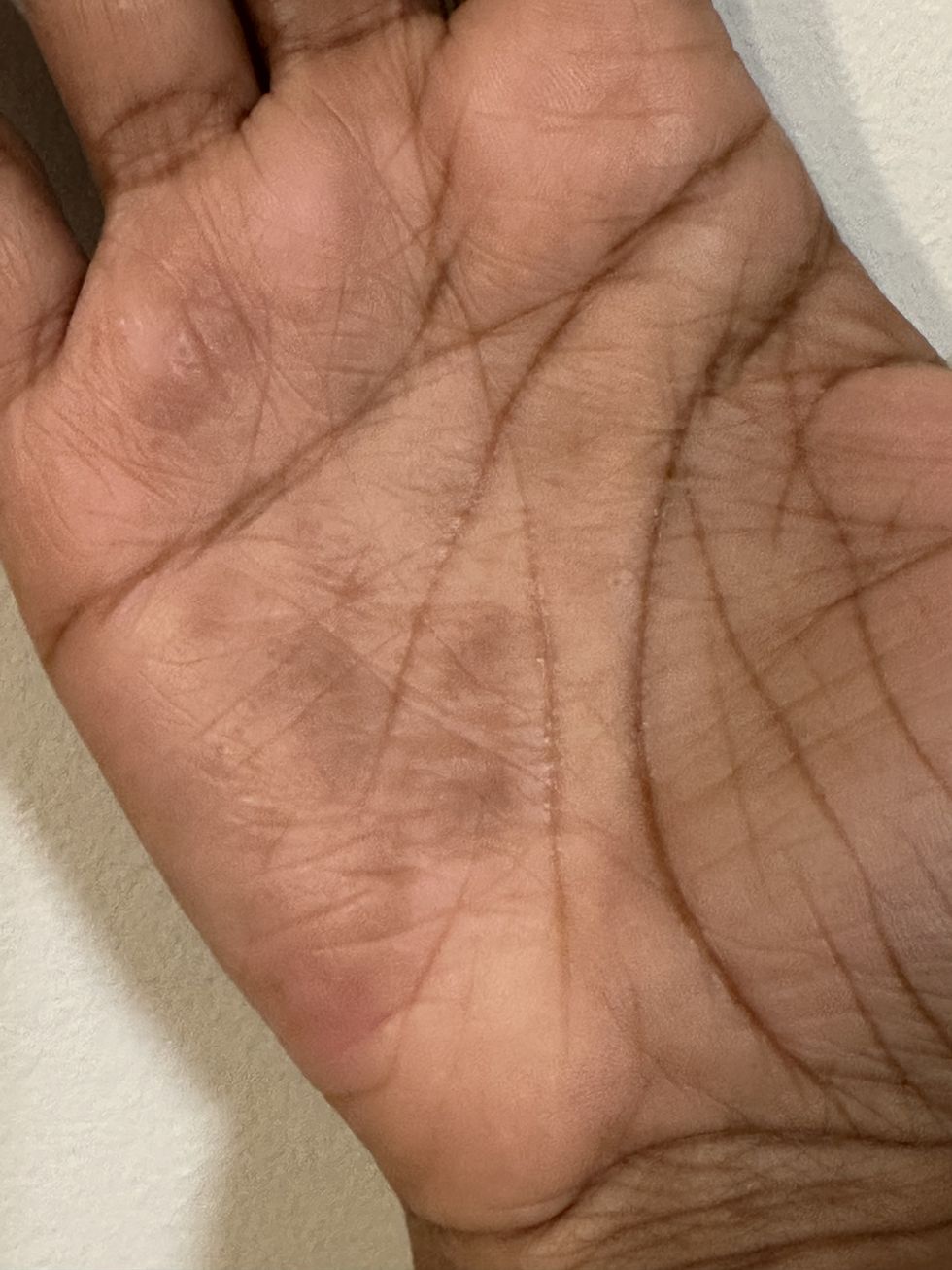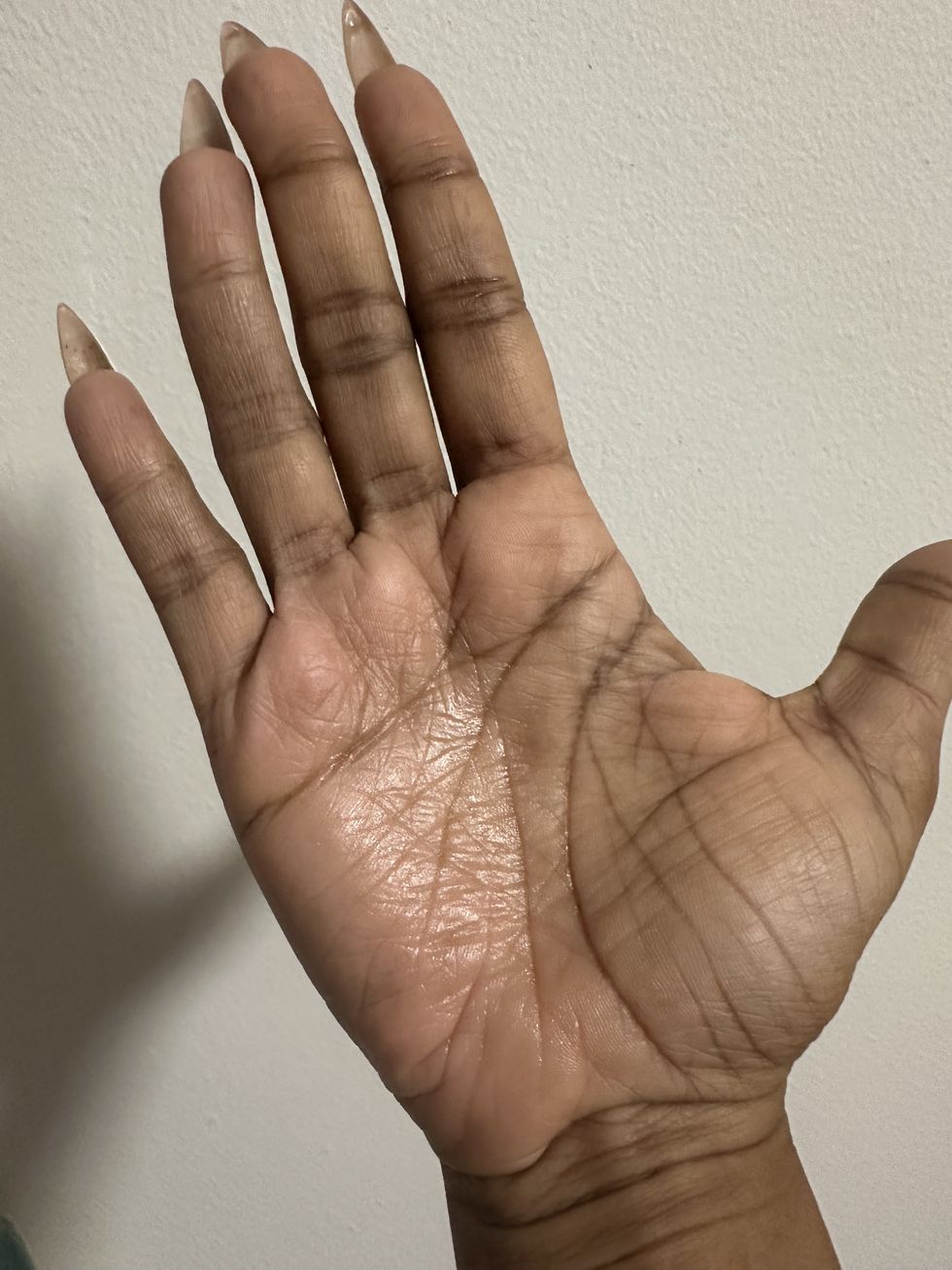Products You May Like
As the saying goes, “You can’t have everything.” You can be born with beautiful eyes and poor vision; you can be tall but terrible at basketball; you can have an excellent voice and lack the ability to rap. In my case, I’m a beauty writer with access to a host of products—skin care, body care, fragrances, you name it—that sometimes make my skin act out.
Relative to the general population, my skin condition, eczema, is pretty common. In fact, according to the National Eczema Association, over 31 million Americans have some version of it. “It’s the most common chronic inflammatory skin disease,” says Dr. Hadley King, a board-certified dermatologist practicing in New York City. “It is characterized by skin barrier disruption. This disruption leads to dry skin, but eczema is more than just dry skin.”
Eczema, or atopic dermatitis, comes in a few forms: There is contact dermatitis, dyshidrotic eczema, seborrheic dermatitis (a.k.a. dandruff), nummular eczema, neurodermatitis, and stasis dermatitis. That means there are seven ways to have itchy, scaly, rashy, and straight-up irritated skin. “It tends to be worse in the winter when the air is dry,” Dr. King notes, mentioning that ultimately it’s your immune system having a “hyper-reactive” response to an irritant. You can get eczema almost anywhere there is skin on your body, but some common spots include the insides of your elbows, the backs of your knees, your eyelids, your neck, or the top of your head.
Eczema affects everyone from infants to elders, within a wide range of severity, and it can happen for many reasons. It can be genetic, caused by stress, or due to a change in the weather. It can also occur when your skin touches something it’s triggered by. As an added bonus, it’s a chronic condition, so there’s no cure. The only option is management. I try to do as much as I can to keep things under control by myself before calling a dermatologist, but I had no choice but to go after the recent flare-up I had.
I get eczema on a few parts of my body, but the most troublesome is the dyshidrotic eczema on my hands. All forms of the skin condition are a pain, but dyshidrotic eczema is a special kind of menace. It mainly affects the hands and/or feet and shows up as “small, tense, clear fluid-filled blisters on the surfaces of the palms and soles and the sides of the fingers and toes,” Dr. King says. “These blisters can appear ‘deep-seated’ or ‘tapioca-like’ due to the thickness of the skin in these areas.” If you’ve got trypophobia and this form of eczema…I’m so sorry.
The tiny little blisters itch like hell and sometimes even burst. When it gets really bad, I get deep cracks in the skin on my hands that make it uncomfortable to do basic things. I was at that point when I walked into my dermatologist’s office in October, looking to get a prescription-strength topical to relieve all the stress my skin was under.
I didn’t want to be prescribed my previous go-to ointment: clobetasol propionate. It’s a powerful topical steroid that did an excellent job of curbing and eliminating flare-ups over the years. The problem? Your skin can get addicted to it if you use it too much (it’s called topical corticosteroid withdrawal), so it’s not great as a long-term practice.
“The main risk of long-term steroid use is possible skin atrophy or skin thinning,” explains Dr. Marisa Garshick, a board-certified dermatologist based in the New York metropolitan area. “This is why steroids are recommended for a limited duration.”
I was looking for more like zero duration, so I agreed to try out Opzelura, a non-steroid cream, in hopes that I could use it to relieve my symptons, then drop it once my hands got better. “In general, nonsteroidal creams can be considered as a good option for mild to moderate eczema or as a maintenance treatment to help prevent flares,” Dr. Garshick notes. “Traditional steroid creams, especially high-potency steroids like clobetasol, can be effective when the skin is more severe, inflamed, itchy, and uncomfortable.”
The cream worked far slower than my usual steroid, but it did clear up some of the irritation. Is it completely gone? No. Since eczema is a chronic condition, it comes back around every few weeks once my hand inevitably comes into contact with something it doesn’t like. But I was still determined to use it as little as possible. Part of that meant upgrading my skin and body care routine.
One of the key ways to manage eczema is to know your triggers and make sure you’re using products that won’t irritate your skin. Everything down to the kind of hand soap you use needs to be formulated with gentle, soothing ingredients. “Those with eczema should look for products that help to support the skin barrier, containing ingredients like ceramides, as well as humectants that help to draw moisture into the skin,” Dr. Garshick says. “Additionally, those with eczema can benefit from thicker ointments containing petrolatum, which provide a protective barrier for the skin to protect it against external irritants.”
I’ve spent the past few months carefully monitoring my flare-ups, and I’m happy to report that I’ve finally gotten into a rhythm where I can focus on treating the irritation with the prescription topical, but mostly lean on calming and moisturizing products. Here’s what’s been working for me:
In the Shower
One of the first things my dermatologist told me to do was to ditch all my liquid soaps—yes, even the ones that are super moisturizing. They can be a bit more intense than bar soaps. “Harsher soaps and detergents can strip moisture from the skin,” Dr. King says, which is why dermatologists often suggest switching to more gentle bar soaps like the Dove Beauty Bar.
That’s a good one, but if I use it too much, even that can be irritating. The Sunaroma CBD Healing Body Bar, however, has yet to make my skin itch even a little bit. It’s made with hemp-derived CBD extract, which has soothing properties. It smells a little pungent in its paper wrapping, but once you get it wet and lather up, it has quite a pleasant smell—far less skunky and definitely clean.
Post-Shower
As Dr. King advises, moisturizing after you shower is crucial to helping keep eczema from going off the rails. I’m already Black, so you never have to ask me twice about moisturizing. La Roche Posay’s Eczema Cream is made with colloidal oatmeal, a superstar ingredient for calming irritated skin. “Colloidal oatmeal serves as a skin protectant and is also soothing, making it a great option for those with eczema who often experience inflammation and sensitivity,” says Dr. Garshick. This formula also has the brand’s signature thermal water, which has soothing benefits. It’s my favorite option for keeping the parts of my body that break out moisturized, and, most importantly, soothed.
These products are generally pricey, so I make sure to be diligent and use them only on the parts of my body that are susceptible to flare-ups: my shins, neck, shoulders, eyelids, inner elbows, and, of course, my hands. “[La Roche Posay’s Eczema Cream] is thick but not greasy and leaves the skin feeling softer and smoother,” Dr. Garshick explains. “It is fragrance-free and paraben-free, so it’s especially good for those with eczema.” The rest of my body gets slathered in Palmer’s Cocoa Butter, which has never done me wrong a day in my life.
Some honorable mentions: Avène XeraCalm A.D. Lipid-Replenishing Balm and the Eucerin Eczema Relief Cream. They are both fabulous options—the Avène balm is more affordable and also contains colloidal oatmeal, which has soothing effects.
For the Face
I keep repurchasing this moisturizer because it’s just that good. Topicals’ formula is incredibly lightweight, but still deeply hydrating despite its thinner texture. This isn’t like one of the thicker creams I mentioned above, but don’t be fooled—Like Butter packs a serious punch. I use itmainly on my eyelids, which sometimes break out when they come into contact with a makeup or skin care product that might be irritating.
I slather the product on twice a day when my lids look scaly or feel itchy. In a few days, my skin is usually back to normal. In addition to colloidal oatmeal, Like Butter also contains super-soothing ingredients like madecassoside and green tea. You’ll pay up for it—a 1.7-ounce tube rings in at $34, but it’s well worth the investment.
For the Hands
When you’re having a flare-up on your hands, dermatologists will tell you to wash them less often, and, like the rest of the body, refrain from using liquid soaps, as they tend to be harsher and more stripping.
Me? I plan to wash my hands regardless, so I need to use something gentle. My dermatologist suggested the Vanicream Cleansing Bar, which now has a permanent place in my routine. “Vanicream soap is a great option as it is fragrance-free and paraben-free, making it a great choice for those with sensitive skin,” Dr. Garshick says. “It’s non-comedogenic so it won’t clog the pores and can be used on the face or body.” It doesn’t have a scent, so it doesn’t quite work for the shower, but for washing my hands, it’s a no-brainer. Not to mention, it’s free of anything that could possibly irritate me.
Another thing a derm might tell you to do is to substitute face wash for hand soap. Facial cleansers tend to be less harsh. I started using Untoxicated’s Clean Start Facial Cleanser on my face and hands. The entire Untoxicated is created for sensitive skin—its signature Hydrating Cream even received a stamp of approval from the National Eczema Association.
I wash my face with Clean Start, especially when my eyelids are acting up, but on my hands? It’s even more glorious. It’s so gentle and doesn’t leave behind a dry feeling. Even if my hands itch badly, I feel no irritation. It’s made with ceramides, arginine, and water-retaining ingredients to keep my hands and face feeling hydrated.
After roughly three months of keeping these products in regular rotation, my hands are doing much better. They’ll still flare up occasionally, but a combination of these skin saviors stops it immediately. It was an investment, but three months out, I’m definitely seeing those returns. And that’s what matters the most.

